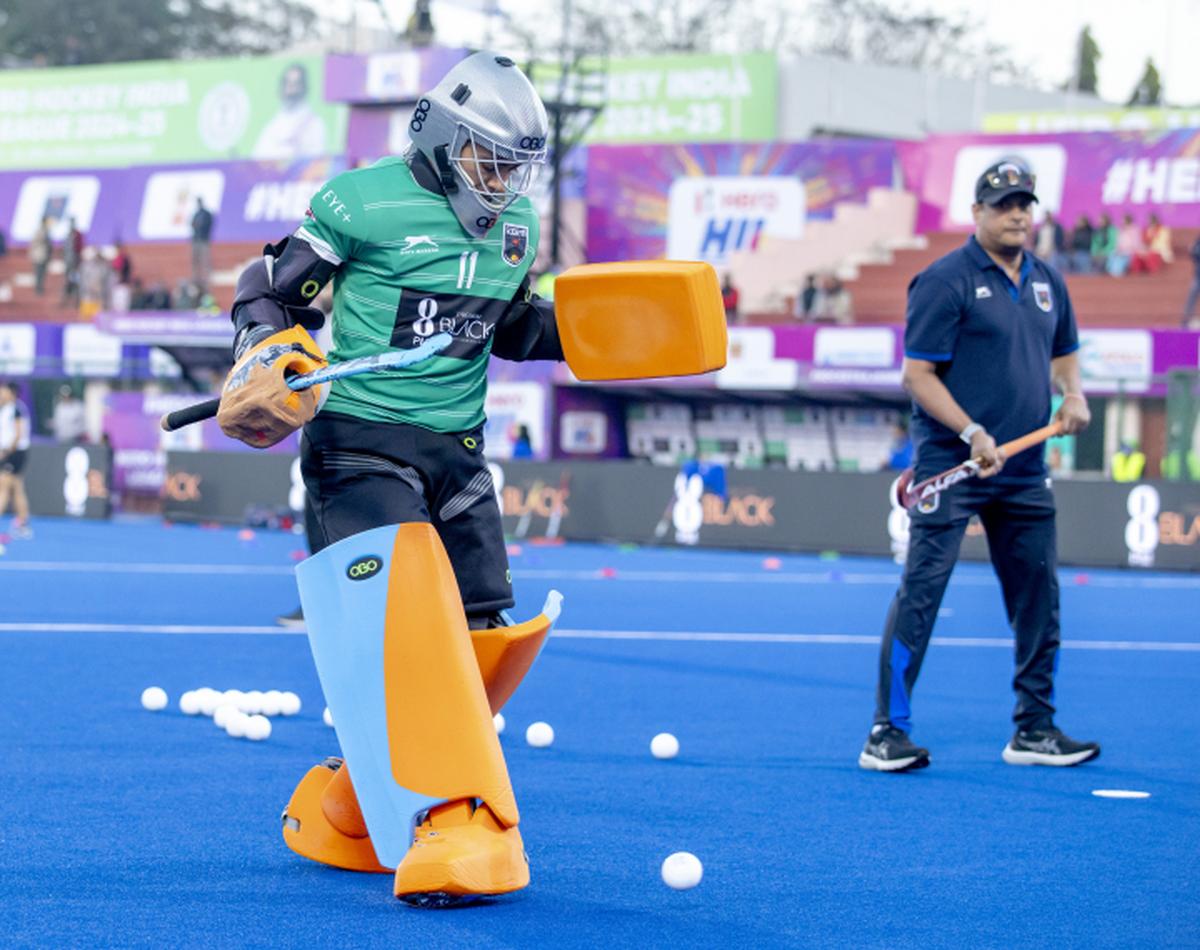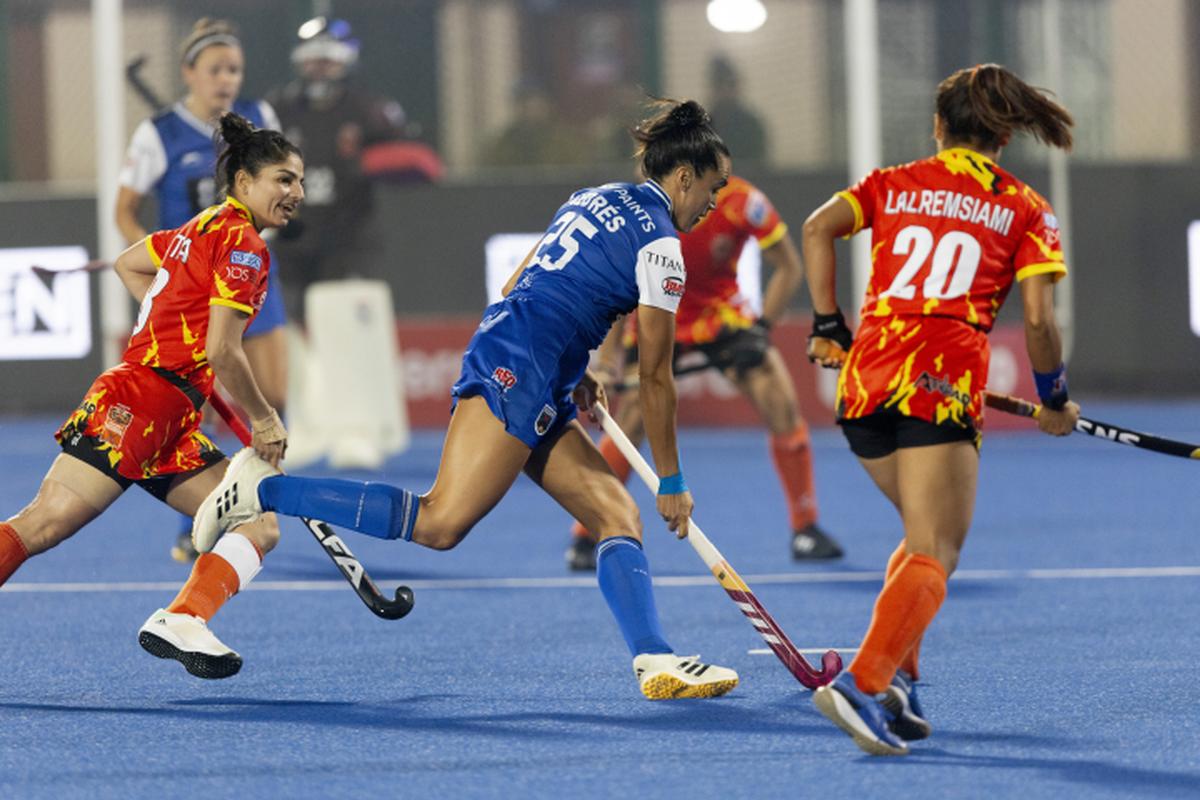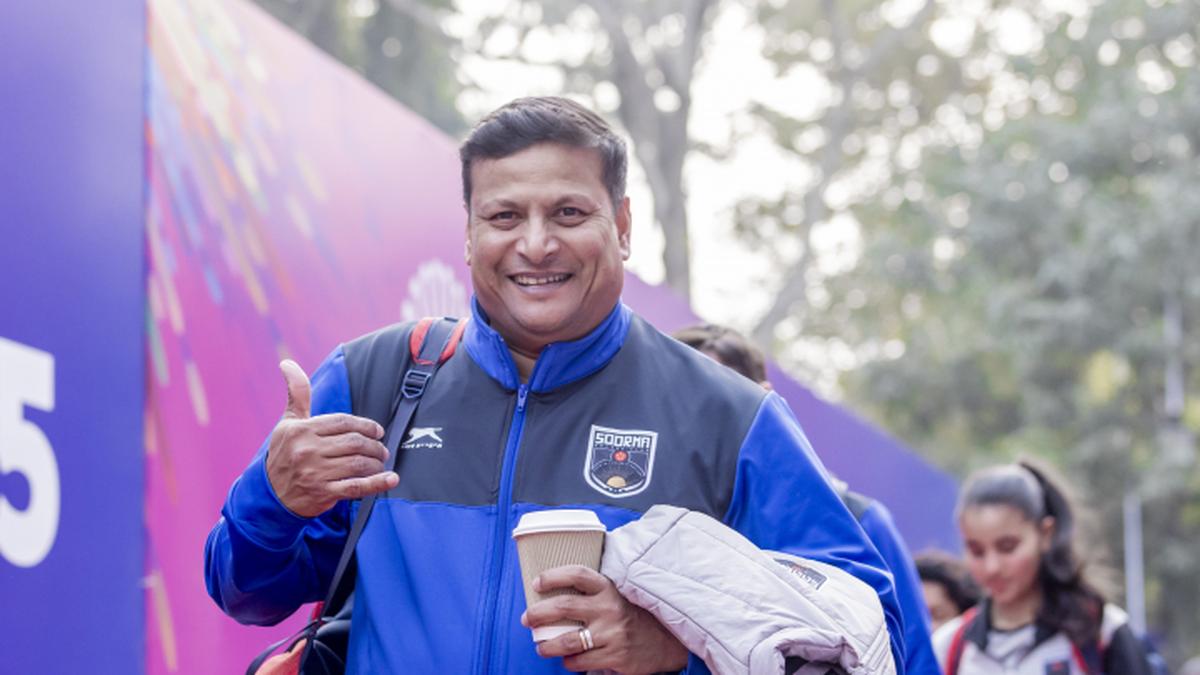Soorma Hockey head coach Jude Menezes: Focused on HIL for now, open to senior national team role in future
Just as Jude Menezes sat down for the interaction at a plush hotel in Ranchi, this reporter cracked a ‘Hey Jude’ joke. The JSW Soorma Hockey Club gaffer chuckled before saying he gets that a lot. Even on official e-mails!
Obviously, The Beatles’ Paul McCartney didn’t have the Indian-origin hockey coach in mind when penning the lyrics way back in the summer of 1968. But even the Jude in question has ‘begun to make it better.’
As of writing, his side, one of the four in the ongoing Women’s Hockey India League, seems well-placed to cement its place in the final on Sunday. If it does, it will go up against the Odisha Warriors. Before that, it has to ensure the Rarh Bengal Tigers don’t win by a margin of five goals or more on Friday.
That shouldn’t be too difficult, given the biggest win margin this season has been 5-1 and 4-0. However, Soorma cannot be complacent. If it hasn’t happened yet, that doesn’t mean it won’t happen ever.
The former India goalkeeper, during the chat with Sportstar, takes one through the challenges of bringing together a team with players from different cultures, throws light on the evolution of shot-stopping through the years, and talks about his side’s penalty corner conversion woes, among other things.
Excerpts
Q: JSW Soorma Hockey Club has already put one foot inside the Hockey India League final. How would you sum up the season thus far?
A: We’ve put ourselves in a good position to get into the final. We still have another game to play against Shrachi Bengal on the 24th (of January). So, our focus remains on that game. We’re taking it one step at a time, but overall, we’re pretty happy with the performance. There have been a couple of hiccups along the way, but I think that’s part of the sport, and what we’re trying to do is manage ourselves now as we come to the business end of the competition.
How challenging is managing a team with players of different ethnicities from other cultures and countries?
That’s where we worked hard… in (establishing) that connection. The off-field connection is probably the most important aspect of this. That’s what we tried hard to develop during our camp in Chandigarh. We had a good 10-day block there. And we worked very hard to get that going. And then they all know how to play hockey. We’re trying to bring that together as well. Bringing both together has been the focus of this entire campaign.
There have been reports that the track in Ranchi has been ‘bumpy’. Craig Fulton and then Manpreet (Singh) attested to this the other day. Have you faced difficulties while trapping the ball during penalty corners as well?
It has been slightly different, but we don’t want to make excuses about the surface. We have to get on with it and deal with it. It is what it is. It’s the same for both teams and all teams playing in this competition. So, yeah, it is what it is.
How do you do away with a ‘bumpy’ track?
Well, you can do nothing about it because it could be due to many factors. It could be the base; if it is the base, it’s a concrete base. Every team is in the same position. We’re not discussing it too much because it’s out of our control. We can control how we adapt to that. That’s our focus.
How has the art of goalkeeping in hockey evolved through the years?
Yeah, goalkeepers have been and are now phenomenal athletes. Firstly, you know they read the game well. They communicate. They are really good organisers, and it’s come a long way from what it used to be. A ‘keeper is one of the key players in the team because they organise the defence well; they play a significant role in penalty corner defence. It’s just like an organisational role. They also play a big part in reading patterns. They can see the pattern unfold quicker than a coach can see from the sidelines.

“A ‘keeper is one of the key players in the team because they organise the defence well,” says Jude Menezes, weighing in on the evolution of goalkeeping in the sport.
| Photo Credit:
HOCKEY INDIA
“A ‘keeper is one of the key players in the team because they organise the defence well,” says Jude Menezes, weighing in on the evolution of goalkeeping in the sport.
| Photo Credit:
HOCKEY INDIA
What is the one thing that you would change in the HIL ahead of the next season?
I will change the travel because we travelled for two days to play one game. We have to take the game across as much as possible, but that remains a physical challenge. Travelling by bus… that took a lot out of our athletes. So, that could be one thing I would like to see changed.
Does that mean you do not favour a multi-venue league held across different stadiums?
Yeah, I would be in favour if we get adequate time. Because it’s a physically demanding sport, and if this kind of travel (is involved), then scheduling could produce better hockey because you’ll have fresher players.
You’ve coached international and club teams, including in Japan and New Zealand. Your closest stint in India was with Soorma in HIL. As the only Indian-origin coach in the men’s and women’s leagues, when might we see you lead the senior national team?
Yes, I’m currently focused on the Hockey India League. I’m happy with my opportunity with Soorma and working with all these wonderful athletes. I’m not looking too far into the future. But yeah, whatever happens… never say never. I haven’t actively pursued it. As I said, my main focus now is Soorma and doing well in this tournament.
Are you a traditional coach or one who relies heavily on technology, gizmo, science and numbers?
We use a lot of science. Strength and conditioning is very important. The GPS data is critical. So, we utilise all these factors in our coaching. I’m more into (gizmos), and it’s about blending it into the coaching. Video analysis is a big part of our coaching. Getting the athletes into those parts, introducing them to online platforms where you’re analysing their game, and providing more education around the whole game. I’m the kind of coach who wants athlete involvement as much as possible. It’s a collective effort. It’s not what I say; it’s what they take away. So, I may have the knowledge, but if I cannot impart it to the athlete, then I have to do a little bit more work on my coaching because it’s my (duty) to be able to impart that knowledge to the athletes.
Many foreigners backed out of HIL teams even before the season started for multiple reasons. What would motivate them to come in greater numbers ahead of Season 2?
Hopefully, seeing the first season’s success because many people might have been apprehensive, not knowing what to expect. And now, with their fellow countrymen and countrywomen going back and spreading the message that it was a great tournament, ‘we had a great time’, that should motivate more people. Also, they’re watching it. So, they’ll see the crowds coming in, the fanfare behind it, and the excitement behind some of the games. That should bring many people back into the HIL and keep them hungry to join this programme.
Are you in favour of having five foreigners on the side, or would you also want to see a change there?
That’s good because it provides a nice balance. This eight-a-side (rule) is pretty good, so we can play five at a time. It’s a good play between the Indian athletes, the international athletes, and our overseas athletes. It gives the younger Indian athletes an opportunity as well because that’s the whole purpose of having the HIL—to promote and develop Indian talent.
Now, to address the elephant in the room, despite being the table-topper, Soorma has the league’s lowest penalty corner conversion rate. What is going wrong?
We just have to be better and keep working on it. Every training session should be our main focus. Hopefully, in the next two games, we might see a few penalty corners being scored, and we’re saving it for the big games.
What has happened to Jimena Cedres? She limped off during one of the games and never made the squad again. Is she doing okay?
She’s got a slight niggle in her foot, and we’re hoping that she will come back for the next couple of games.

Soorma Hockey star Jimena Cedres has been nursing a niggle but is expected to return for the next couple of games.
| Photo Credit:
HOCKEY INDIA
Soorma Hockey star Jimena Cedres has been nursing a niggle but is expected to return for the next couple of games.
| Photo Credit:
HOCKEY INDIA
What has the Hockey India League done for the women’s sport?
Rubbing shoulders with some of the best in the business. It’s pretty cool. It’s provided a platform for hockey to grow on a global stage, so it’s not just the Indian athletes who will benefit, but also hockey in general because it will increase the sport’s popularity overseas as well. It’s done and will do wonders for hockey on a global stage.



